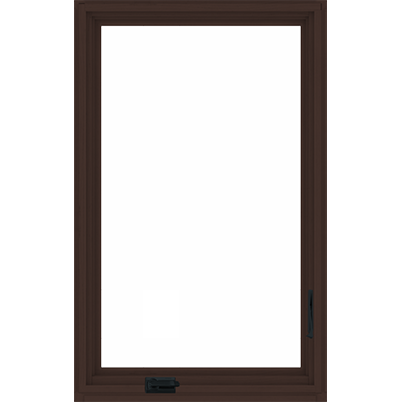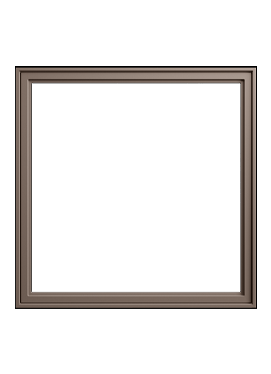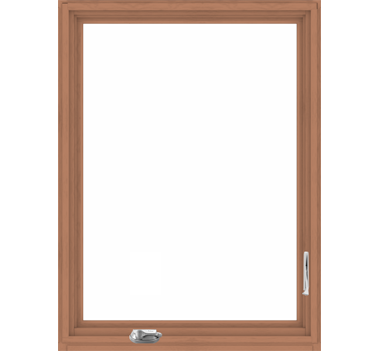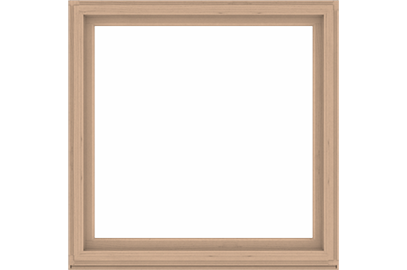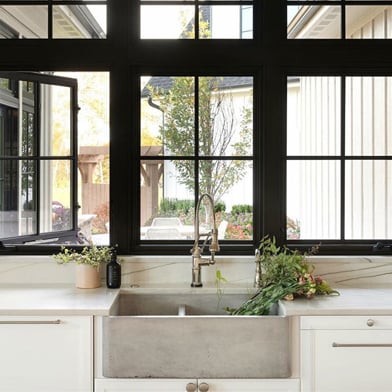What is a bay window?

Beautiful, timeless, contemporary? You might not think it, but bay windows can be all of the above. A bay window is an architectural feature that expands your living space, enhances curb appeal, and elevates your home's aesthetics by helping bring in abundant natural light. Read along to explore various bay window options to perfectly complement your home's style and functionality.
A bay window carves out an interior space by combining at least three windows into one combination unit that projects out from the walls of a home. From the exterior, it has a roof on top and either brackets beneath it or wall framing that extends all the way down to the foundation. The former style will create a shelf on the interior that’s a favorite spot for sun-loving house plants and cats alike. The latter style goes all the way to the floor and expands the home’s square footage, creating a bump-out that can accommodate furnishings and makes a cozy reading nook.
Are you a pro? You can find information about sizing and joining among our technical documents.
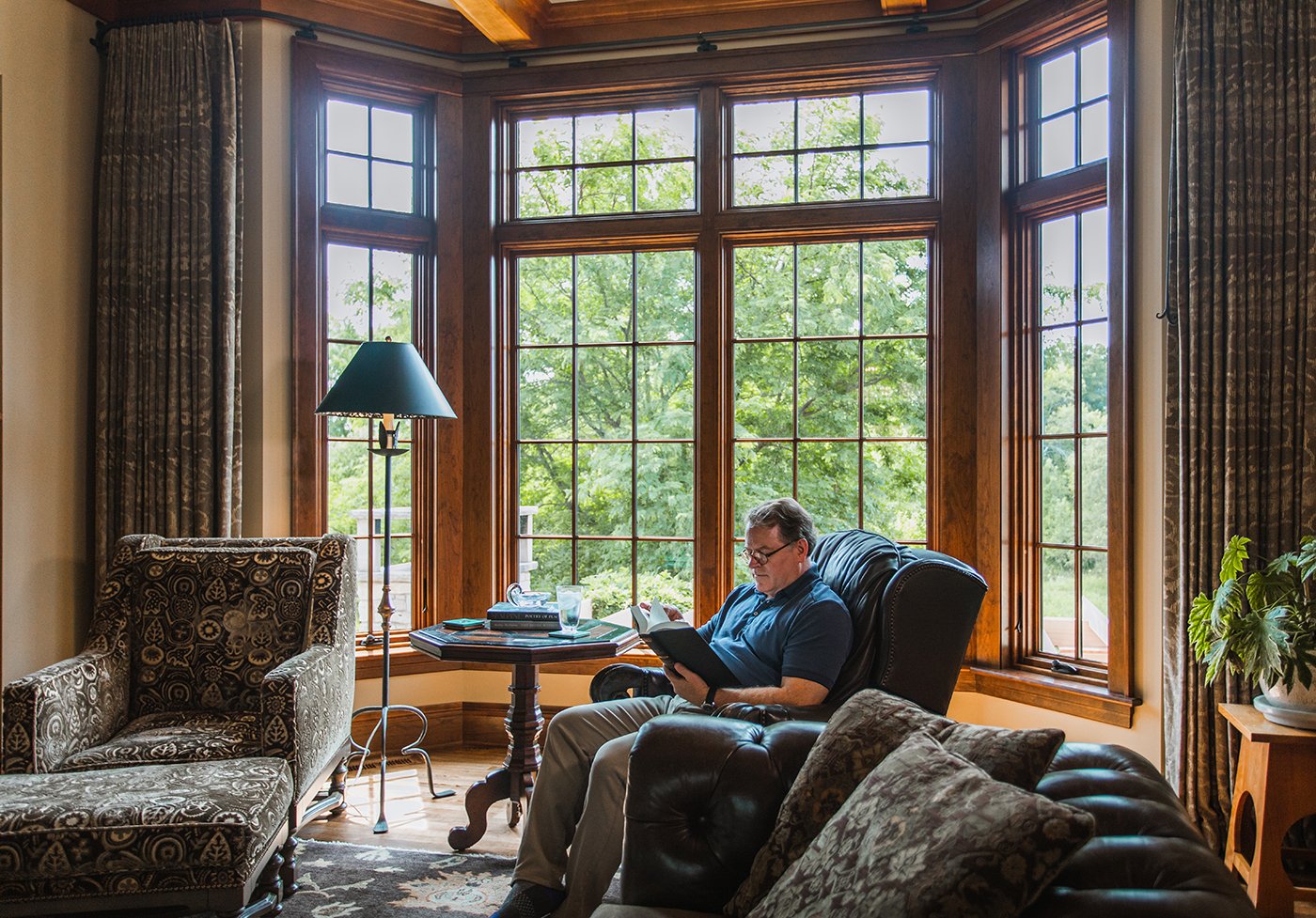
What are the different types of bay windows?
Bay windows come in different shapes, styles, and types. Here is a guide to a few of the most common bay window styles:
- Canted bay windows: Canted is another term for angled, so a canted bay window is a more general term. A canted bay could be bracket-supported or go all the way to the floor. It could be on a first floor or an upper floor. A canted bay could have flanking windows at any angle. Canted bay window is just a synonym for bay window without any specific characteristics assigned to it.
- Oriel bay windows: Oriel bay windows are bracket-supported, so they don't extend to the ground. While they can be installed on any floor, they’re commonly seen on an upper floor. Historically, an oriel would have a decorative appearance and was a popular feature of more ornate architectural styles. Think of Italianate, Victorian, or Edwardian residential buildings in dense cities — the brownstones of Brooklyn or the painted ladies of San Francisco.
- Box bay windows: A box bay window is a type of oriel bay window, i.e. it’s bracket supported. Its flanking windows will always be at 90° to create the shape that lends its name. Sometimes, a box bay window is used to create a mini greenhouse indoors or a garden window.
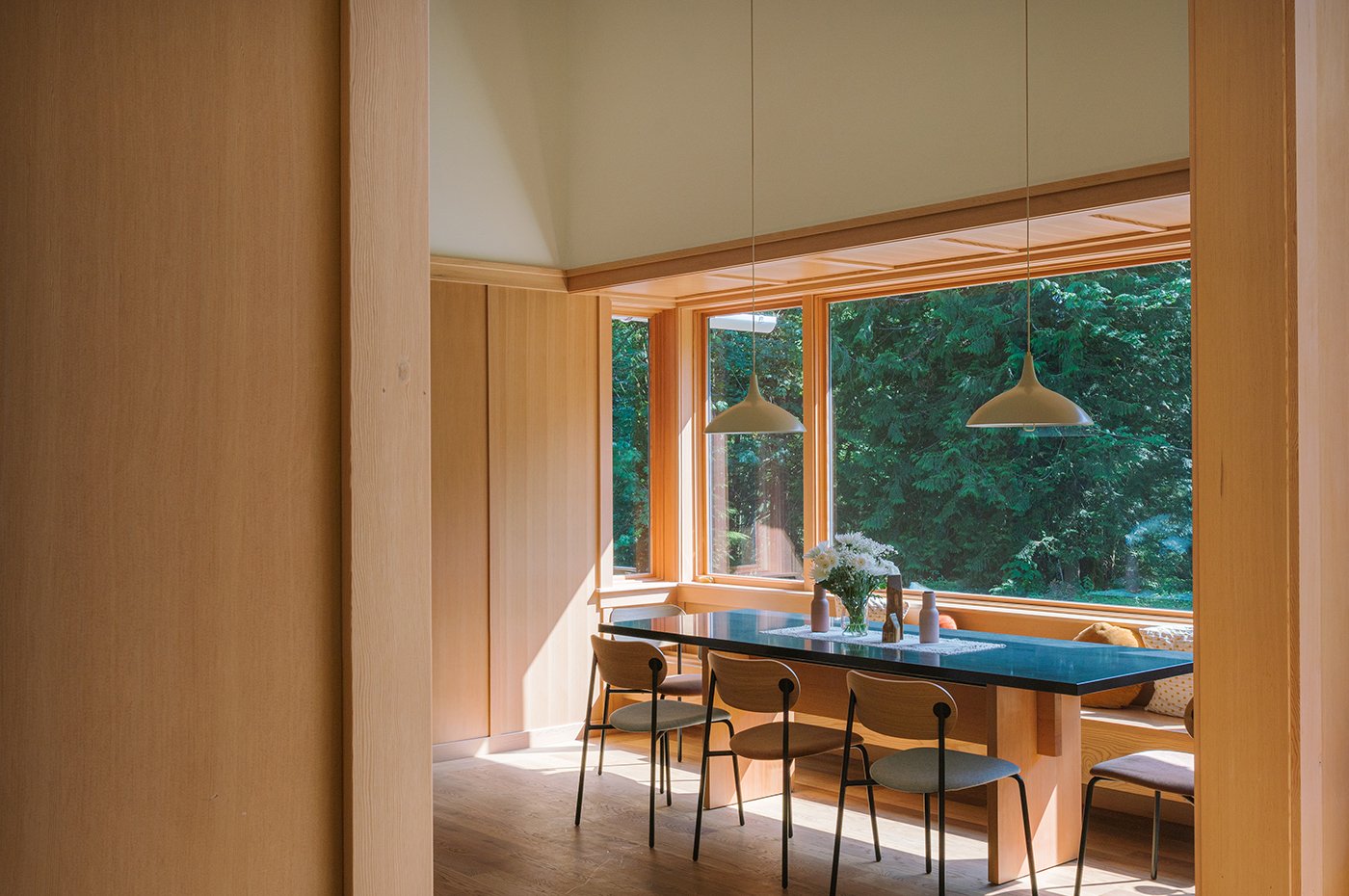
If you order one of our bay windows, it will be the type that’s supported by brackets. This type of window is available through our 400 Series and E-Series product lines and can work in any type of project — new construction, replacement, or remodel.
If you’re building a new home or undertaking a large-scale remodel, you’ll have more freedom to create a bay window that goes all the way to the floor and is supported by the foundation. You can still use our windows if you’re creating this type of bay window, and you’ll be able to choose from any of our product lines. With this type of bay, joined windows are often included in the center. This means the windows can fit together without the need for wall framing.
What's the difference between a bay and bow window?
Technically, a bow window is a type of bay window. The difference is in the angles of the windows. A bow bows out in a gentle curve while a bay has windows at sharper angles to one another.
Our bay windows feature a picture window at the center flanked by either double-hung or casement windows at 90°, 45°, or 30°.
Our bow windows are made of a minimum of four casement windows set at 10° angles to one another.
We offer bay and bow windows through our 400 Series and E-Series product lines.
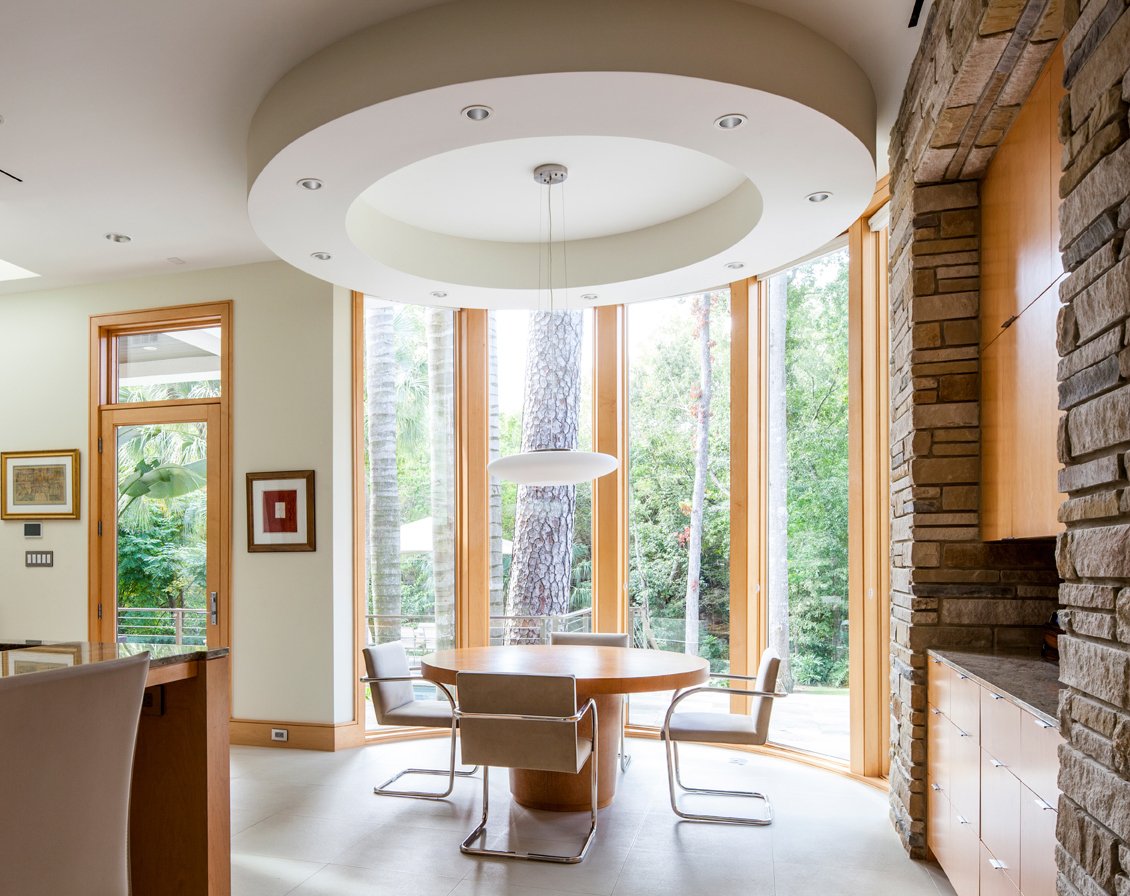
What are the advantages of a bay window?
With its combination of windows that extend beyond the exterior walls, a bay window has some unique advantages. Here are a few you’ll want to note:
- Curb appeal! A bay window is memorable, and in some cases, it’s the signature feature on a home’s exterior.
- Natural light: With multiple windows in one unit, there’s a large amount of glass set at a variety of angles, which allows in more light overall.
- Panoramic views: The projecting design with windows facing multiple directions allows you to take in more of the landscape.
- Living space: The bay creates additional space on the inside — either through a shelf that’s perfect for pets and plants or actual square footage, depending on the style chosen.
Which home styles have bay windows?
Bay windows are hallmarks of certain classic home styles. Your home’s architecture and space constraints might play a role in whether a bay window is the right choice for you. Here are some selections to keep in mind:
- Victorian: Consider double-hung windows with cottage sashes (shorter top sash), reddish brown wood stains or warm white painted interior frames, and forest green or warm brown exteriors. Consider a Queen Anne grille pattern on the top sash. Transoms (windows above the main windows) are also typical in a bay window combination. Get more details on picking out windows for a Victorian home.
- Tudor: Consider either casement or double-hung windows with a colonial or diamond grille pattern and stained wood frames. Transoms are also typical in Tudors. Get more details on picking out windows for a Tudor home.
- Other home styles: Craftsman Bungalows, Colonials, and various styles of row houses, like brownstones, also popularly feature bay windows. In addition, we’re seeing more new construction homes featuring contemporary twists on the bay window — more on how to achieve an updated look in the next section.
Within the home, bay windows are typically featured in more public rooms where their beauty and benefits can be fully appreciated. However, they can also be a great addition to a bedroom where they add storybook-sweet charm. Keep in mind that more traditional styles will likely have more ornamental and decorative features, whereas modern homes will keep it minimalist.
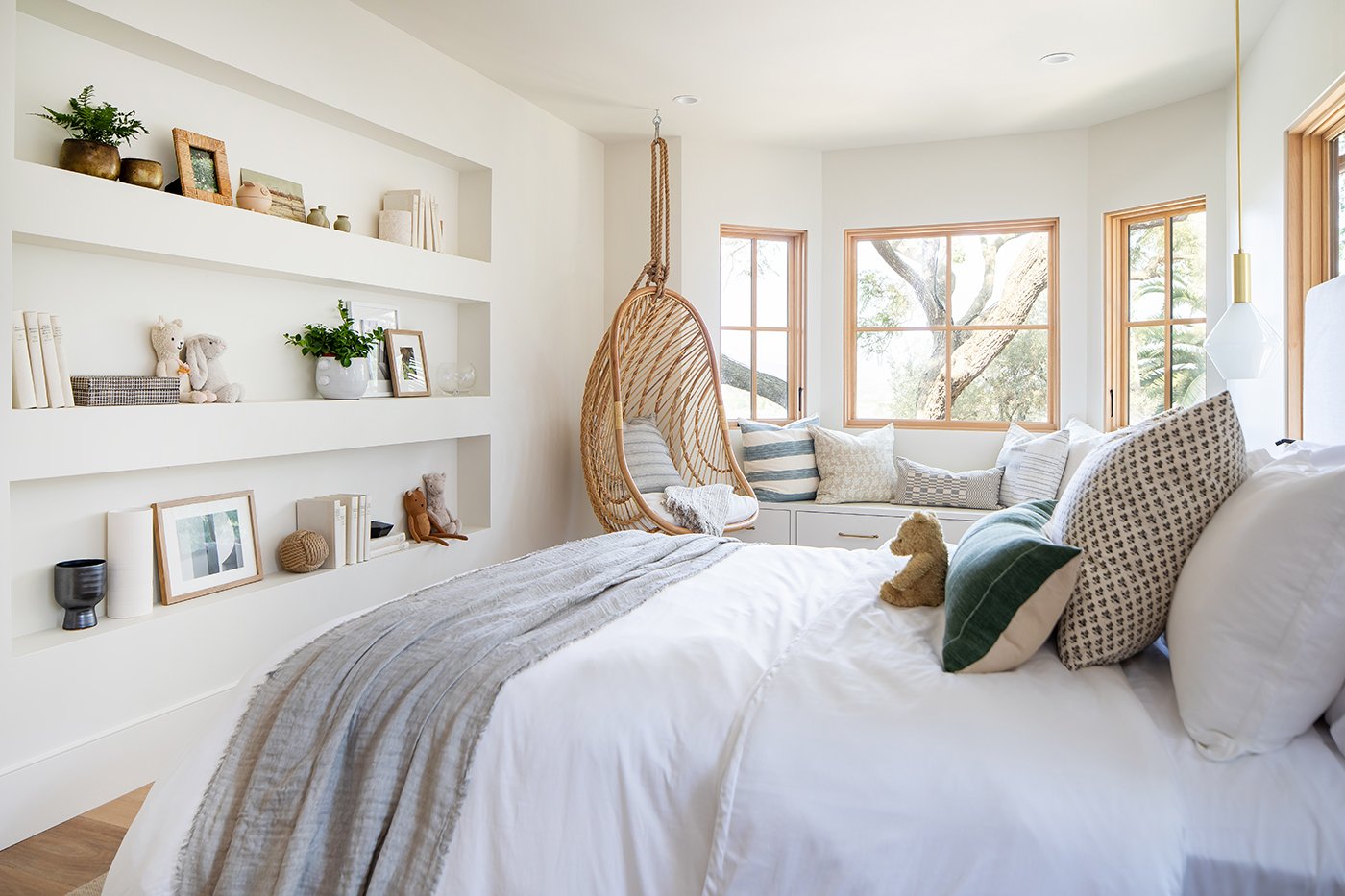
Bay window angles and their benefits
Our 400 Series Bay Windows and E-Series Bay Windows are available with flanking windows at 30°, 45°, or 90° angles. When deciding on the right angle for your windows, take the following into consideration:
- How much space do you have outside? If you have a postage-stamp size yard, a 30° or 45° angle will likely be the better option, so you can preserve some outdoor space while still creating a pleasant nook on the interior. If you want a round window with a more subtle exterior protrusion, a 400 Series Bow Window is another good option.
- Is your home more modern or more traditional? Of course, there are always exceptions, but generally, a box bay, where flanking windows are at 90°, creates clean lines suiting a more modern home. The trapezoidal shape created by flanking windows at 30° or 45° suits a more traditional home.
- What’s happening on your interior? Will you be using the space created by your bay window to house furniture? If so, a box bay with flanking windows at 90° would better maximize your space. Think about how the window will function in the room and your goals for it when selecting the ideal angle.
As you consider the ideal angle for your bay window, don’t forget to consider which type of flanking window will be most practical. Remember that casements are crank operated, making them easy to open when you’re reaching. A double-hung can work well in a bay where you’ll have easy access to the windows.
Structural support requirements for a bay window
If you think you want a bay window in your new construction home, there are a few challenges to take into consideration when preparing for installation, and the installation itself:
- How will the unit be supported? If your bay window is going to be cantilevered from the home without sub-unit support, you will need to use cables. These cables will have to be anchored to the home, typically into ledgers for floor joists. Another way to support the units is by building a supporting knee wall that follows under the path of the unit. This is usually the desired method for bay windows that extend to the foundation, because the seat board is no longer necessary to provide support. In this method, the wall itself holds up the unit, allowing for the walkout area.
- How will the cables be covered? If you have cables, they will need to be covered up, along with the head of the unit. Typically, this can be done using a hollow pseudo roof that the cables can pass through.
- How will you determine the size? Bay window sizing is unusual because the head and seat board are not calculated into the overall unit height.
If you’re replacing a bay or bow window, you will need to think about some different challenges, including whether you want to match what’s already existing (cable or wall support) or if you want to change it. If you want to change it, you’ll need to know whether you have the proper structural support for the project type you have in mind. For example, if you want a bay that goes to your foundation, you need to know if you have the ability to open up a wall and frame it out to support it.
Energy efficiency considerations for bay windows
Both bay and bow windows include large expanses of glass since they’re made of at least three windows. Glass will never be as energy efficient as a wall, but here are some selections you can make to improve the energy efficiency of your bay or bow window:
- Choose the right glass options: Low-E glass coatings increase the performance of windows by reflecting or absorbing heat. The coatings are ultra-thin, generally transparent, and the best part is that a Low-E coating comes standard with our windows. If you want to further enhance window performance, you could select casements for the flanking windows as their single-sash design seals in a way that helps improves efficiency.
- Add insulation: The energy efficiency of bay windows can be improved by adding insulation at the header and below the seat board (the shelf built into a bay). This is something your builder or contractor can do during installation.
- Skip the grilles: When they touch both panes of glass, grilles can conduct energy and help decrease the insulating power of air space. Various products are available with energy spacer bars that avoid touching the glass if you want to include grilles.
- Prevent condensation: One of the best ways to help prevent condensation on the inside of a bay window is by reducing indoor humidity. You can reduce humidity with proper ventilation and by using a fan to promote air movement. Learn more about condensation.
Find out more about how to pick out energy-efficient windows.
Finally, if you are looking for a more energy-efficient solution, you could consider a picture window rather than a bay or bow window. Picture windows are the most efficient window type because they don’t open, and their large sizes could create a similar feel to a bay or bow. Just keep in mind that the bigger you go, the less energy-efficient it will be since glass is less efficient than a wall. When trying to strike a balance between windows and energy efficiency, your architect or builder will be able to help.
Can I customize a bay window to fit my home’s style?
Yes, you can customize a bay window to your home through considered selections. While bay windows might seem more fitting for a traditional home, and are classic features in Tudor and Victorian homes, for example, they’re also more dynamic than you might think.
Here are some selections that can give your bay window a more modern flair:
- Right angles: 90° flanking windows create a rectangular shape that’s sometimes called a box bay window.
- Window type: Casement windows have clean lines and an elegant single-sash design. (The sash is the glass and framing around it.)
- Frame finish: Black is a go-to, but don’t forget about dark bronze for a warmer shade. And if you prefer stained wood, try a blonde or honey colored one, like white oak or maple.
Remember: Your architect or designer can help you through window selections that will fit your home. If you need a place to start, check out our Home Style Library.
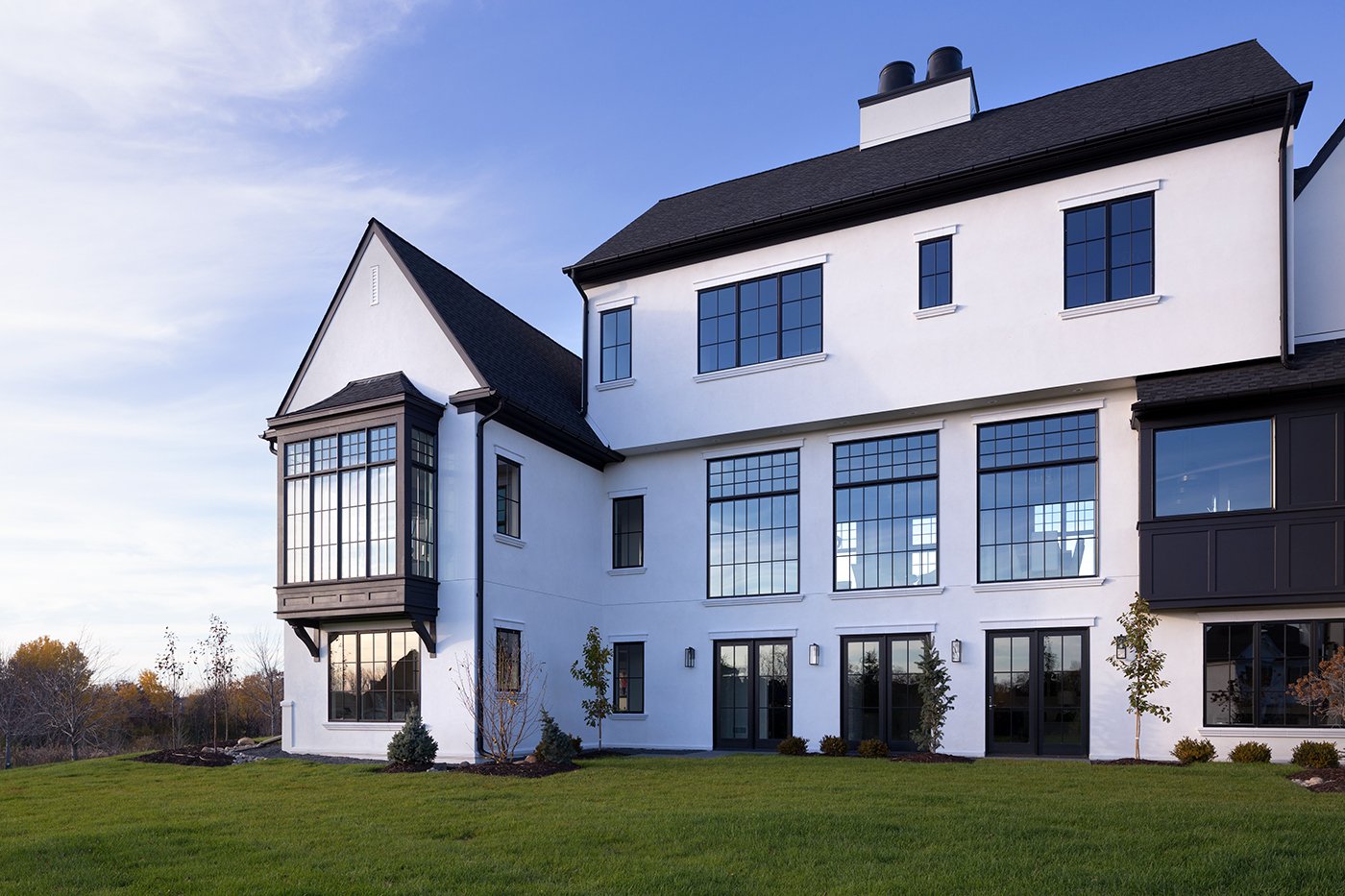
Creative ideas for utilizing bay windows
The charm of a bay window is that it offers more than an architectural element to the home. It’s also a great opportunity to create an interior space with a unique use. Consider these projects for inspiration:
- Breakfast nooks: Gather the family for wholesome meals in a bright and sunny kitchen corner.
- Bedroom reading nooks: A bay window that extends to the foundation creates extra space for cozy seating, so it’s a perfect place for curling up with a cup of tea and a good book.
- Plant sanctuary: The extra natural light from bay windows makes a great spot to let your green thumb thrive in your home.
- Bathtub alcove: Give your bathroom a luxurious upgrade with the addition of a statement bay window.
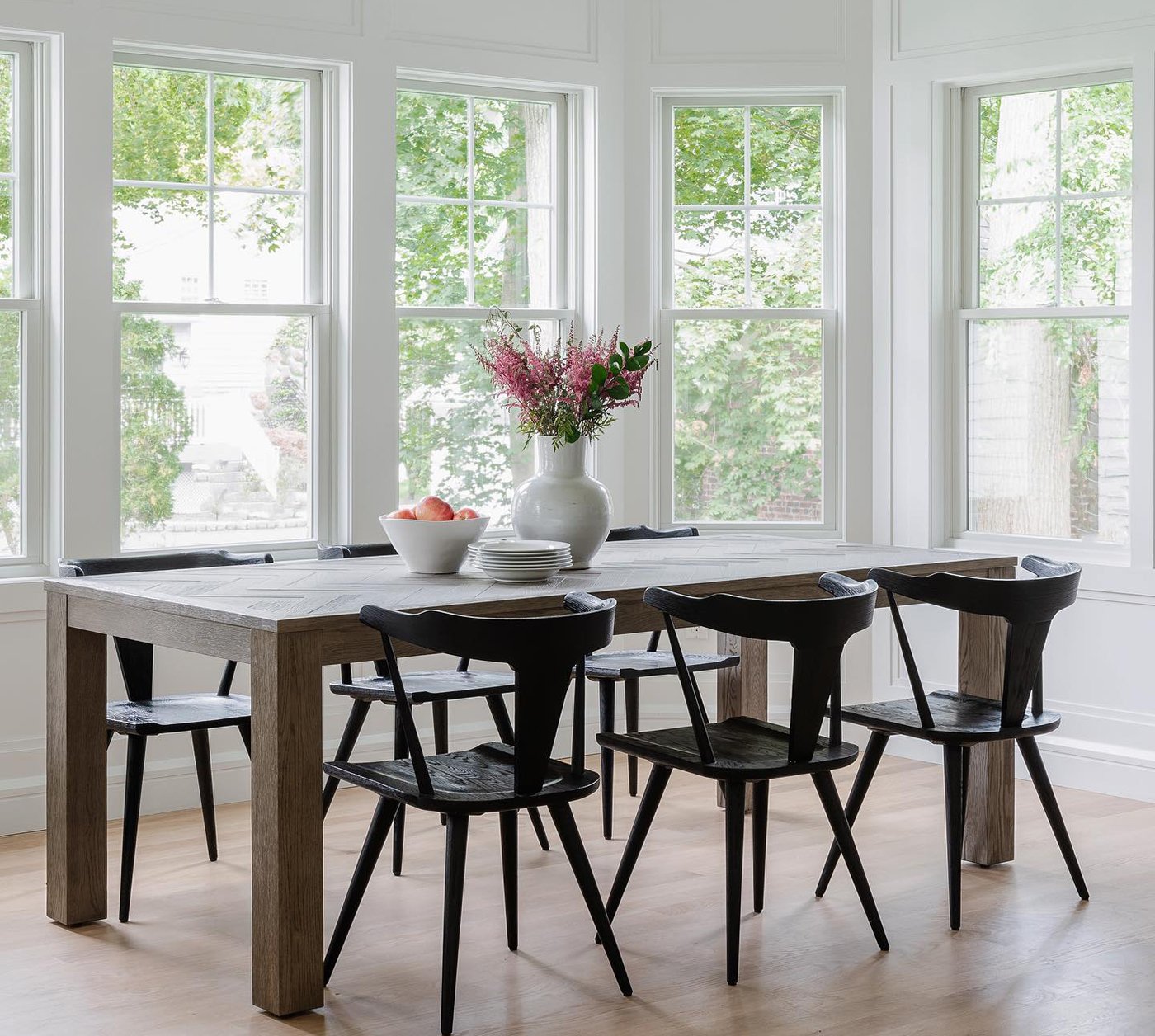
How much additional light can bay windows bring into your home?
Because bay windows include multiple windows facing various angles, they offer ample opportunity to add natural light to your home. There are a few ways to maximize this advantage:
- Size: This might go without saying, but the larger your bay window, the more light will enter your home. Consider adding more than the standard three or four windows to your bay if you have the space.
- Location: South-facing windows will maximize natural light in a home. Consider what rooms you use the most, and if possible, add a south-facing bay window to the room with the most traffic.
- Style: The picture window in the center of your bay window unit offers the perfect opportunity for maximizing natural light. This is because picture windows can more easily be made oversize, due to the fact that they don’t open. When choosing the flanking windows, opt for sleek frames and no grilles. A casement window with its single-sash will offer more clear glass than the alternative, which is a double-hung and therefore has a check rail (where the lock is) across its center.
Bay and bow window FAQs answered
Can bay windows or bow windows increase the resale value of a home?
They can! Bay and bow windows add curb appeal to a home. They’re hallmark features that stick in the mind and can charm potential home buyers. In fact, realtors agree that homeowners will pay a premium for a house with Andersen® brand windows and doors.* So we think it’s fair to say your investment in this type of window won’t be for naught.
*2024 Andersen brand survey of U.S. realtors
Are bow windows still in style?
While bow windows may not be at the top of trends lists, there’s been an embrace of curves and circles in the home design space recently with the rise of biophilic design. Shapes that remind us of the natural world support this approach, and the bow, with its gentle arc, is a great example of this. Want to learn more about biophilic design?
Does Andersen sell replacement bay windows?
Yes, our bay windows can be used in a replacement project. You will find options through the 400 Series and E-Series product lines. In addition, Renewal by Andersen, our full-service window replacement division, also offers bay windows.
Are bay or bow windows more energy efficient?
Both bay and bow windows include large expanses of glass since they’re made of at least three windows. Glass will never be as energy efficient as a wall, but there are selections you can make to improve the energy efficiency of your bay or bow window, including window type, low-emissivity (Low-E) coatings, and skipping grilles. Find out more about how to pick out energy-efficient windows.
In addition, the energy efficiency of bay windows can be improved by adding insulation at the header and below the seat board (the shelf built into a bay). This is something your builder or contractor can do during installation.
Finally, if you are looking for a more energy-efficient solution, you could consider a picture window, rather than a bay or bow window. Picture windows are the most efficient window type because they don’t open, and their large sizes could create a similar feel to a bay or bow. Just keep in mind that the bigger you go, the less energy-efficient it will be since glass is less efficient than a wall. When trying to strike a balance between windows and energy-efficiency, your architect or builder will be able to help.

